Types of Jade Plants ‘Care & Growing Guide’ - Attracts Prosperity & Positive Energy in Feng Shui!!
Updated: October 09, 2025

In the world of succulents, Jade plants stand out as resilient symbols of fortune and beauty. Jade plants, scientifically known as Crassula ovata, are often called Money plants, Lucky plants, or Friendship plants. These names reflect the cultural beliefs associated with Jade plants, symbolizing good luck, prosperity, and friendship plant.
The name Crassula means thick or fat, and ovata means egg-shaped. With their thick, glossy, oval-shaped leaves and woody stems, Jade plants exhibit a tree-like appearance that adds a touch of elegance to any space. Originating from South Africa, Jade plant has been a must-have houseplant for decades. Although this plant grows slowly, gaining only 2 inches annually, the mature jade plants can reach a maximum height of 3 to 6 feet. However, larger, more established these plants can be quite expensive to purchase due to their slow growth and longevity.
Under ideal conditions, this emerald, green jade plants live for 50 or even 100 years.
The flowers of the Jade plant are small and star-shaped, typically appearing in clusters at the ends of the plant's branches. These delicate jade plant flowers can range in color from white to light pink and the bloom typically occurs between late winter and early spring. Even though tropical plants rarely bloom indoors, you can encourage your jade houseplant to bloom with proper care.

One of the distinctive features of Jade plants is their ability to store water in their thick, fleshy leaves, enabling them to survive in arid conditions. This characteristic makes them excellent choices for forgetful or busy plant owners since they can withstand periods of neglect and irregular watering.
The jade plants have a unique growth habit that naturally resembles a bonsai tree. When people search for jade bonsai, they're often looking for a plant that's at least 5 gallons in size, with a mature, tree-like appearance. The jade bonsai is a popular choice for its resilience and low maintenance requirements, making it an ideal option for both experienced and novice gardeners.
The goal is to showcase the plant's natural beauty and achieve a desired level of growth and development.
Let's delve into the fascinating world of Jade plants and uncover the secrets behind their enduring popularity.
History & Origin of Crassula Ovata
Jade plants (Crassula ovata) have a rich history and origin that dates back over 1000 years. They are native to the arid regions of South Africa, where they can grow into large, tree-like structures in their natural habitat.
What is Feng Shui? Plus Learn How the Jade Plant Helps Attract Prosperity & Positive Energy into Your Life
Feng shui is an ancient Chinese practice that focuses on connecting people with their surroundings in order to promote positive energy flow and balance in their lives.
In Feng shui, different areas of a home or space are associated with specific aspects of life, such as wealth, health, relationships, and more.
Jade plants are considered a symbol of prosperity, wealth, and good luck, and are believed to bring harmony, balance, and positive energy to Feng Shui.
The southeast corner in your home is known as the prosperity corner or wealth area, and it is one of the major places thought to promote financial abundance and prosperity.

Placing a jade plant in the prosperity corner of your home or workspace is believed to activate and enhance the flow of wealth energy in that area. It's a great way to incorporate both the beauty of jade plants and the positive energy associated with the prosperity corner.
Jade plants are known as the "money plant" or "money tree" in Feng Shui. Their large, coin-shaped leaves and capacity to retain water are symbolic of their ability to store wealth.
Today, these Chinese money plants are popular worldwide as low-maintenance houseplants, attracting wealth, prosperity, and positive energy into many homes and businesses as a money tree or money plant.
The jade plant holds symbolism in various cultures.
- Chinese Culture: Good Luck, prosperity, wealth
- Feng Shui Aspect: Wealth storage, harmony, retention, balance
- South African Culture: Friendship, Good luck, positive energy, good health
- Native American Culture: Wealth, positivity, prosperity
It’s fascinating to see how a single plant can hold similar meanings across various cultures. Whether you believe in symbolism or simply appreciate the beauty of the jade plant, it can be a wonderful addition to your space.
Discover All the Different Types of Jade Plants – Our Favorite List & More..
The real Jade plant only includes the Crassula ovata species, which is the genuine Jade Plant. It is easily identifiable by its fleshy, oval-shaped leaves and is often linked to luck and prosperity.
Some other websites tend to mix things up by mislabeling various Crassula types as Jade Plants, leading to confusion. These sites commonly just list different popular Crassula varieties that are not actually jade plants.
We have carefully selected the plants below to provide you with accurate information about the different types of Crassula ovata Jade Plants. Below is our list of the most popular real jade plants to add a touch of green to your space.

1
Jade Plant (Crassula ovata)
SHOP AT PLANET DESERTkeypoints:
- USDA Hardiness Zones: 11,12
- Watering Needs: Low, Extremely drought tolerant
- Mature Size: 9 ft. tall, 5 ft. wide
- Flower Color: White, light pink
The jade plant (or money plant) is a popular and easy-to-care-for houseplant. This bronze beauty is characterized by its thick, shiny, oval-shaped leaves that resemble the shape of a coin. Native to South Africa, jade plants are often associated with good fortune and prosperity. It is a lovely succulent with glossy, rounded, and fleshy dark green leaves with red edges that pop in direct sunlight. This plant makes an excellent addition to rock gardens, xeriscaping, and container gardening for its low-maintenance growth habit and unique appearance. With proper care, they can grow into beautiful, jade tree plants and even produce small white or pink flowers under the right conditions. Learn more...

2
Gollum Jade (Crassula ovata ‘Gollum’)
BUY AT PLANET DESERTkeypoints:
- USDA Hardiness Zones: 9, 10, 11, 12, 13
- Watering Needs: Low, Extremely drought tolerant
- Mature Size: 3 ft. tall, 2 ft. wide
- Flower Color: White, light pink
The Gollum jade is a unique cultivar of the jade plant, known for its distinctive tubular leaves that have a reddish tint on the tips. This succulent is named after the character Gollum from "The Lord of the Rings" due to the resemblance of its leaves to Gollum's fingers. The 'Gollum' variety is a compact, slow-growing plant that can reach up to 3 feet in height. It is admired for its unique tube-shaped leaves with slightly flared, trumpet-like openings resembling suction pumps. Like its parent plant, it is also drought-tolerant and stores water in its leaves. With its unique appearance and easy-care requirements, it can be a charming addition to any indoor succulent garden. Learn more...

3
Variegated Jade Plant (Crassula ovata variegata)
SHOP AT PLANET DESERTkeypoints:
- USDA Hardiness Zones: 10,11
- Watering Needs: Low, Extremely drought tolerant
- Mature Size: Up to 6 ft. tall, 3 ft. wide
- Flower Color: Pink, white
The Crassula ovata variegata is another popular cultivar of the jade plant that displays striking variegated leaves with dense foliage. The jade plant variegata is an elegantly branched shrub with attractive green foliage and striped, thick, fleshy spoon-shaped leaves with creamy-white or pale-yellow patterns that turn pink in the sun. Your variegated jade crassula can live for up to 70 years if given proper care. This cultivar adds a pop of color and visual interest to any indoor plant collection. Like the regular jade plant, it is easy to care for and is drought-tolerant, making it an ideal low-maintenance houseplant. Learn more...

4
Hobbit Jade Plant (Crassula ovata ‘Hobbit’)
BUY AT PLANET DESERTkeypoints:
- USDA Hardiness Zones: 9,10,11,12
- Watering Needs: Low, Extremely drought tolerant
- Mature Size: 4 ft. tall, 2 ft. wide
- Flower Color: White, light pink
The Crassula ovata Hobbit is characterized by its tubular, elongated leaves that have a slight curl at the tips, resembling the shape of a hobbit's hat. Its leaves are glossy jade-green, and when exposed to direct sunlight, they may turn reddish. It is commonly referred to as a "Jade tree," but it is actually a succulent plant that can grow a bonsai-like base, adding to its unique charm and making it a popular choice among bonsai enthusiasts. The jade bonsai tree probably needs to be at least 10 gal minimum to start looking like a tree; ours is 20 gal, which is why it has a more mature trunk and developed appearance compared to dwarf jade bonsai trees. This cultivar is a compact and slow-growing plant, making it ideal for indoor cultivation or small spaces. Learn more...

5
Botany Bay Jade (Crassula ovata ‘Botany Bay’)
BUY AT PLANET DESERTkeypoints:
- USDA Hardiness Zones: 9,10,11,12
- Watering Needs: Low, Extremely drought tolerant
- Mature Size: 3 ft. tall, 2 ft. wide
- Flower Color: White, light pink
The Crassula ovata 'Botany Bay' is another intriguing variety of the Jade plant family, that is known for its compact growth habit and unique foliage characteristics. This jade plant has dark green thick oval light green-yellow leaves that can change color to red when stressed, making for a super cool and unique addition to any collection. Plus, this dwarf jade plant grows into a small tree with thick brown branches and foliage that is just begging to be admired. This low-maintenance plant is equally popular among beginners and experts for its distinctive appearance and easy-to-care-for growth requirements. Learn more...

6
Lemon Lime Jade Plant (Crassula ovata ‘Lemon & Lime’)
BUY AT PLANET DESERTkeypoints:
- USDA Hardiness Zones: 9,10,11
- Watering Needs: Low, Extremely drought tolerant
- Mature Size: 4 ft. tall
- Flower Color: Pink, white
The Crassula ovata 'Lemon and Lime' is a delightful cultivar of the Jade plant family known for its vibrant and colorful foliage. This variety stands out with its bright green leaves that feature a striking lemon-yellow margin, creating a beautiful contrast and adding a pop of color to any garden or indoor space. The 'Lemon and Lime' Jade plant's leaves are thick and fleshy, typical of succulents, and store water to help the plant withstand dry conditions. It is a relatively low-maintenance plant, making it a great choice for xeriscaping or water-wise gardening. This succulent thrives in well-draining soil and requires infrequent watering, as it is drought-tolerant and can withstand periods of dryness. Its striking appearance and easy-care nature make it a popular choice for those looking to create a sustainable and visually appealing landscape. Learn more...

7
Dwarf Jade Plant (Crassula ovata ‘Crosby’s Compact’)
keypoints:
- USDA Hardiness Zones: 10,11
- Watering Needs: Low, Extremely drought tolerant
- Mature Size: 3 ft. tall
- Flower Color: White
The Crassula ovata 'Crosby's Compact' is known for its petite size and compact growth habit. This cultivar features small, round leaves that tightly cluster together, creating a dense and bushy appearance. The Crosby's Compact Jade plant is an excellent choice for those looking to add a touch of greenery to small spaces or indoor environments due to its manageable size and attractive foliage. With its compact size and ease of care, it is a popular choice for those looking for a plant that not only looks good but also requires little attention. Whether placed on a sunny windowsill or incorporated into a succulent arrangement, this cultivar adds a touch of greenery and elegance to any space.

8
Crassula ovata ‘Hummel’s Sunset’
keypoints:
- USDA Hardiness Zones: 9,10,11,12
- Watering Needs: Low, Extremely drought tolerant
- Mature Size: 2-3 ft. tall, 1-2 ft. wide
- Flower Color: White, pale pink
The Crassula ovata 'Hummel's Sunset' is known for its striking leaves, which are a beautiful blend of yellow, orange, and red. The 'Hummel's Sunset' Jade plant's leaves often develop intense hues when exposed to bright sunlight, creating a sunset-like appearance that adds a touch of warmth and beauty to any space. In addition to its eye-catching colors, it also features the typical fleshy and oval-shaped leaves characteristic of Jade plants. Whether used as a standalone specimen or incorporated into a succulent arrangement, it is a versatile plant that adds visual interest and warmth to its surroundings.

9
Ogre’s Ears Jade Plant (Crassula ovata ‘Ogre’s Ears’)
keypoints:
- USDA Hardiness Zones: 10,11,12
- Watering Needs: Low, Extremely drought tolerant
- Mature Size: 3 ft. tall
- Flower Color: White, pink
The Crassula ovata 'Ogre's Ears' stands out for its unusual and distinctive leaf shape. This variety is named 'Ogre's Ears' due to its thick, chunky leaves that resemble the ears of a mythical ogre. The leaves of the 'Ogre's Ears' Jade plant are typically round and plump, with a slightly folded appearance, adding a touch of whimsy and character to its overall look. Whether displayed on its own or combined with other succulents, it adds a touch of whimsy and personality to any space. Its playful appearance and easy-care requirements make it a popular choice for both beginner and experienced gardeners looking to add a touch of uniqueness to their indoor or outdoor gardens.

10
Tricolor Jade Plant (Crassula ovata ‘Tricolor’)
keypoints:
- USDA Hardiness Zones:9,10
- Watering Needs: Low, Extremely drought tolerant
- Mature Size: Up to 8 ft. tall
- Flower Color: White
The Crassula ovata 'Tricolor' is prized for its stunning variegated foliage. This variety is named 'Tricolor' due to the three distinct colors present on its leaves, typically a combination of green, cream, and pink or red. The leaves of the 'Tricolor' Jade plant are elegantly adorned with these vibrant hues, creating a beautiful and eye-catching display that adds a pop of color to any indoor or outdoor garden. One unique feature of the Crassula ovata 'Tricolor' is its ability to change color intensity based on the amount of sunlight it receives. When exposed to bright light, the pink or red hues on the leaves tend to intensify, enhancing the plant's visual appeal. This color-changing characteristic adds a dynamic element to the 'Tricolor' Jade plant, making it an exciting and ever-changing addition to your plant collection.
Above, we have listed the main popular varieties of Jade plants. However, enthusiasts frequently create unique cultivars over time. So, here are a few more options, but remember, you can identify a real Jade plant by checking for "Crassula ovata" in the plant's name.

Dwarf Jade (Crassula ovata ‘Minima’)
This dwarf jade is a popular jade plant known for its compact growth habit and small, rounded leaves. This miniature plant makes a perfect addition to small spaces, rock gardens, desert landscaping, and bonsai trees.

Crassula ‘Blue Bird’ (Crassula ovata ‘Blue Bird’)
Crassula ovata ‘Blue Bird’ is a stunning succulent with silvery-blue leaves that have a touch of pink on the edges. This variety is perfect for adding a pop of color to any indoor or outdoor garden.

Pink Jade Plant (Crassula ovata ‘Pink Beauty’)
The Pink Jade Plant is a branching succulent with thick stems, obovate leaves, and colorful star-shaped pink flowers that bloom from early to mid-winter.

Crassula ovata ‘Harbour Lights’
The 'Harbour Lights' variety of Crassula ovata is renowned for its striking variegated leaves, often covered with hair or 'meal', and small, terminal panicle-borne flowers.

Crassula ovata ‘Red Coral’
Crassula ovata ‘Red Coral’ has oval leaves that curl inwards at the top and are borne on thick branches. The foliage tips turn deep red when exposed to sunlight, thus adding an exciting appeal to its appearance.

Hybrid Jade Plant (Crassula ovata ‘Gandalf’)
The slow-growing hybrid jade plant features bright green leaves that resemble spoon-shaped cups. The distinctly shaped leaves have scarlet red margins that intensify with sun exposure.
Jade Plant Care Guide-How to Care for & Maintain the Various Types of Jade Plants
When it comes to caring for jade plants, it is a low-maintenance succulent that thrives and survives year after year when provided with proper care and growing conditions. Jade plant enthusiasts must understand the basic needs of these plants for watering, sunlight, soil, fertilizer, temperature, humidity, and pruning.
Quick Reference
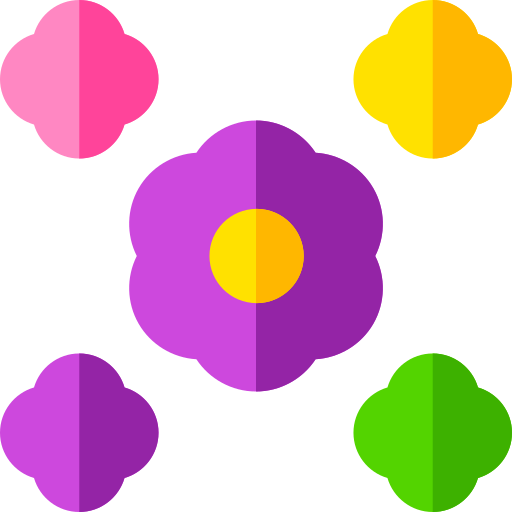
Bloom Season

Flower Color
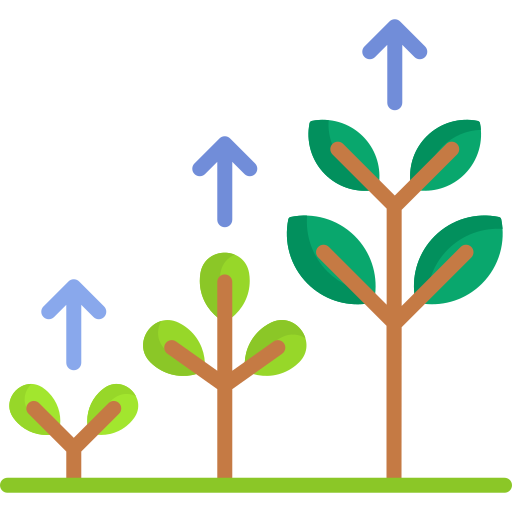
Growth Rate
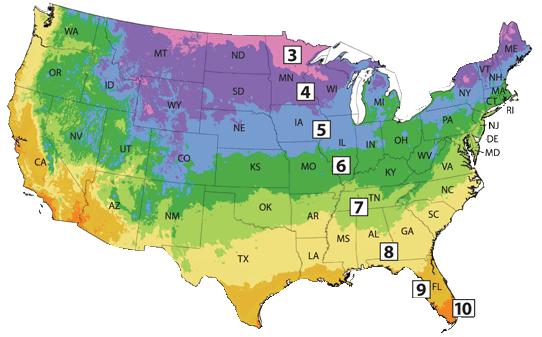
Hardiness Zone
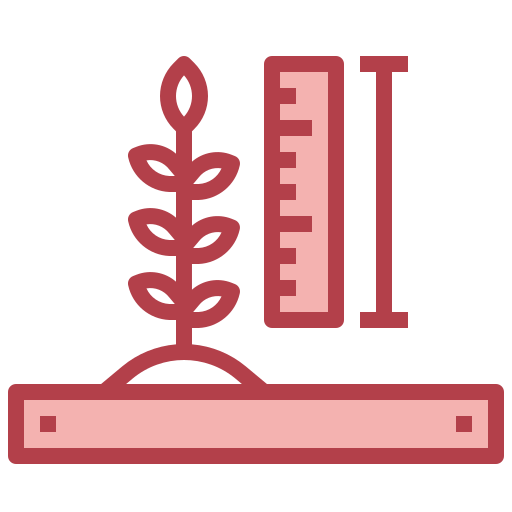
Mature Size
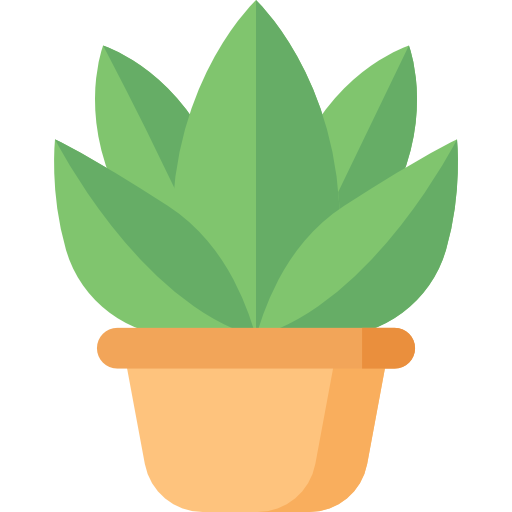
Plant Type

Sun Exposure

Toxicity

Watering Needs
Watering: How Much? & How Often?
Like all succulents, Jade plants are adapted to dry conditions because they store water in their leaves and thick stems.
Therefore, they should only be watered when the soil is completely dry. Otherwise, overwatering will harm your plants by promoting root rot and entire plant wilting.
To determine when to water jade plants, it's best to check the soil's moisture level. Stick your finger about an inch into the soil; if it feels dry to the touch, it's time to water.
When watering jade plants, it is vital to drain the water properly through the drainage hole and empty the saucer underneath the pot. This will prevent the root from sitting in water and rotting which can lead to the plant becoming unhealthy and eventually dying.

In the spring and summer, during the growing season, you can water your jade plant approximately every 2-3 weeks, adjusting based on environmental conditions like temperature and humidity.
In the fall and winter, during the dormant season, reduce watering to around once a month or even less, as the plant's growth slows down during this time. Remember, it's always better to underwater than overwater to prevent issues like root rot.
Signs of Overwatering in Jade Plants
- Leaves turning yellow due to root rot and poor aeration
- Foliage loss due to saturated soils
- Leaves and stems are droopy
- Wrinkly or shriveled leaves that do not plump back up after watering
Signs of Underwatering
- Foliage turns yellow or brown
- Due to a poor watering schedule, leaves develop wrinkles, and trunks become red or purple, impacting the plant’s aesthetic appeal.
- Dead leaves drop off the plant
Proper Light Conditions for Jade Plants
When growing jade plants indoors, they thrive in bright, indirect light for at least 4-6 hours daily. Place your jade plant near a south-facing window where it can receive sufficient sunlight without being exposed to direct sunlight for extended periods, as this can cause sunburn on the leaves.

For outdoor cultivation, jade plants prefer full sun to partial shade for at least 4-6 hours a day. They can benefit from the morning sun and some protection from the intense afternoon sun, especially in hot climates. Providing the right balance of sunlight is crucial for the plant's growth and overall health.
Remember that jade plants are adaptable and can somewhat tolerate different light conditions. However, for optimal growth and to prevent issues like leggy growth or leaf drop, it's best to ensure they receive adequate light. By understanding and meeting the light requirements of your jade plant, whether indoors or outdoors, you can help it thrive and showcase its beautiful foliage.
To ensure your jade plant's health and longevity, gradually adjust the light level, as sudden changes can stress the plant and cause leaf loss. Instead, provide bright, direct light to maintain healthy and strong leaves.
Pro Tip
The best way to know if your Jade Plant is receiving enough light is to watch for the development of a red tint along the edges of oval-shaped leaves. This red hue ensures the plant is receiving enough light.
Soil & Fertilizer Requirements: Best Types for Optimal Growth
Like all other succulents, Jade Plants thrive best in airy, porous, and nutrient-rich, well-drained soils with a pH of 5.6 to 6.5. So, the best soil for these plants will be a potting mixture specific for succulents. Planet Desert specializes in succulents and has specialized succulent potting soil that includes an organic substrate with mycorrhizae to help with the growth of a healthy root system to help your succulents thrive. As an okay alternative, you can create your own potting mix by combining equal portions of perlite, coarse sand, and good natural potting soil.
Another best way to prevent moisture retention is to use clay or terracotta pots. These materials quickly absorb water from the soil and avoid fungal infections.
 In the spring, once a year, during their active growth season, fertilize these beautiful succulents with a balanced (5-10-5) NPK fertilizer. This will benefit the plant with healthy growth and foliage development.
In the spring, once a year, during their active growth season, fertilize these beautiful succulents with a balanced (5-10-5) NPK fertilizer. This will benefit the plant with healthy growth and foliage development.
Do not fertilize your Jade plants during the dormant season, which is the fall and winter months. Also, avoid overfertilizing these plants, which can lead to foliage browning, falling off, and burning.
Optimal Temperature and Humidity Requirements for Jade Plants

When considering the indoor temperature, jade plants prefer temperatures between 65-75°F. They can tolerate slightly cooler temperatures at night but should be protected from drafts and sudden temperature fluctuations, which can stress the plant.
For outdoor cultivation, jade plants are typically hardy in USDA hardiness zones 10-12, where temperatures don’t drop below 30°F.
In cooler climates, jade plants can be grown outdoors during the summer but should be brought indoors before the first frost in the fall to protect them from cold temperatures.
Jade plants prefer humidity levels around 40 to 60 percent, and during warm summer days, place a humidifier near them or near water to prevent the drying of leaves.
Outdoors, jade plants can adapt to varying humidity levels as long as they are not exposed to prolonged periods of high humidity, which can lead to issues like fungal diseases.
Mastering Pruning Techniques for Healthy Growth
Jade plants need pruning and maintenance after their dormancy period, as this will promote new and healthy growth. Therefore, prune your succulents in the spring and summer, during their active growing season, to remove older leaves and encourage new growth. Use clean scissors or pruning shears to remove dead or damaged plant parts.
How to Prune a Jade Plant into a Bonsai
If your goal is to create a bonsai, it's best to start with a young jade plant, as younger plants are more malleable and easier to shape. Here's how to do it:
- Select a Young Plant: Begin with a young jade plant with a compact growth habit. This will be easier to shape into a bonsai over time.
- Initial Pruning: Remove a few of the lower leaves to encourage the plant to grow upward and develop a thicker trunk. As the plant grows, selectively pinch off tender tip shoots to promote lateral branching and a fuller canopy.
- Shape the Plant: Over time, use sticks or bonsai wires to support and guide the plant's growth, helping it take on the classic bonsai form. Regularly prune the branches to maintain the desired shape.
- Ongoing Maintenance: Continue to prune and shape the plant as it grows, focusing on developing a thick trunk, balanced branches, and a proportionate canopy typical of bonsai trees.
Repotting: When and How to Repot Your Jade Plant
Jade succulent plants need to be repotted every 2-3 years for smaller specimens and every 4-5 years for larger ones. To pot and repot them:
- Select a container with drainage holes and fill it with well-draining soil mix (or you can buy our specialized potting mix that works best for these jade succulents).
- Then, remove the plant from its current container and shake off the excess soil.
- After this, thoroughly examine the plant roots for rotting and browning and remove them.
- Place the plant in its new container, which should be 2 inches larger than the previous one, and backfill it with potting soil
- Tap the soil around the plant root ball gently to remove any air, and then let the plant dry for about a week.
- After one week of repotting Jade Plant, water it thoroughly to reduce the risk of rotting.
Proper Jade Plant Placement for Prosperity & Positive Energy - More Feng Shui Tips
When searching for the ideal spot for your jade plant, jade plant, a bagua map in feng shui helps determine the optimum placements, we have outlined the main prosperity and wealth placements below, but it's also essential to trust your instincts to choose the exact placement that resonates with you.
To attract positive energy and prosperity by using jade plants in different areas of your home, you can place them strategically in each corner associated with specific elements in Feng shui. Let's explore the best places to put jade plants in your home, entryway, or office according to each corner and its corresponding element:
Southeast Corner (Wood Element): The Southeast corner is the corner of prosperity that attracts wealth. It is also symbolized by the element ‘wood’. So, having a jade plant there with its woody bonsai branches enhances the element of prosperity and wealth.
In a home office, placing a jade plant in the southeast corner or on the southeast corner of your desk can significantly enhance business luck and success.
The jade plant's lush green leaves and vibrant energy align well with the wood element, creating a harmonious and positive atmosphere.
Southwest Corner (Earth Element): The southwest corner is believed to attract good luck and fortune. If there is no place in the southeast corner, then the southwest corner is your 2nd best option. It is also symbolized by the element ‘earth’.

By strategically placing this lucky plant in different corners of your home according to the elements associated with each direction, you can create a harmonious environment that attracts positive energy and prosperity.
Bad Energy – Where Not to Put Your Jade Plant
Bedrooms: Avoid placing jade plants in bedrooms, as they can disrupt sleep according to some Feng Shui practitioners, while others believe they bring restorative energy. Instead, place them in areas where their lucky energy can be fully utilized. Jade plants are more effective in rooms dedicated to activity and movement than to sleep and rest because they bring good fortune and prosperity. If you still want to place a jade plant in your bedroom, use the bagua map to identify the wealth area and place it there for auspicious placement.
Bathrooms & Laundry rooms: These are considered inauspicious locations for jade plants, as the wastewater energy can negate the plant's wealth-attracting properties and send prosperity down the drain. Avoid placing symbols of wealth and abundance in bathrooms and laundry rooms, as they can be negatively impacted by the energy of these spaces.
Key Points on How to Grow Jade Plants Indoors
Growing and caring for indoor Jade plants is easy and hassle-free as they are low-maintenance and can survive and thrive in various conditions. So, here are our top tips for growing Jade plants indoors as houseplants:

- Jade plants are drought-tolerant succulents that store water in their leaves and stems, so it is important not to overwater them. Overwatering can lead to soggy soil conditions, poor root aeration, and rotting. So, give them deep water, ensuring the excess water drains out of the pot. Also, allow the soil to dry out completely between each watering session.
- When growing Jade plants indoors, always situate them in locations where they receive bright indirect sunlight at least 4-6 hours per day. So, place them near south—or west-facing windows where they receive ideal sunlight.
- Always use a well-draining potting soil mix specifically made for succulents and cacti.
- For the best growth and development, jade plants prefer warm temperatures between 65- and 75 degrees Fahrenheit. So, when growing them indoors, maintain warm and consistent temperatures.
- To promote new growth, fertilize your Jade plants with a balanced fertilizer (5-10-5 formula of NPK) during the active growing season.
Key Points on How to Grow Jade Plant Outdoors
Jade plants are hardy in USDA hardiness zones 9 to 12, and growers in these zones can grow and maintain these succulents outdoors all year round without fear of frost. Here are our guidelines for gardeners to grow and sustain Jade plants outdoors all year round:
- When planted outdoors, always select a garden spot with well-draining soil that receives direct sunlight for 4-6 hours daily. It will result in more healthy growth and intense foliage color.
- Plant Jade plants in well-draining soils. If the soil in your garden is heavy or clay, amend the soil texture with coarse sand, perlite, or pumice to improve drainage.
- Water your garden-grown jade plants sparingly, allowing the top inch of the soil to dry out between waterings. Otherwise, overwatering can kill your Jade plants through root rot, so maintaining an optimum watering schedule is essential.
- Jade plants prefer to grow in warmer temperatures in USDA zones 9-11 and do not tolerate cooler temperatures. If you live in an area with colder winters, use frost protection sheets or bring them indoors.

- When growing Jade plants outdoors, fertilize them once a year during the active growing seasons, in the spring. Feed your outdoor Jade plants a balanced fertilizer (5-10-5 formula of NPK) and avoid fertilizing them in fall and winter, which are their dormant seasons.
Landscaping Ideas & Companion Plants
When incorporating Jade plants (Crassula ovata) into your landscaping, you can pair them with companion plants that complement their unique characteristics. In addition, their unique foliage, easy care, and drought tolerance make them perfect for rock gardens, Mediterranean gardens, succulent gardens, and Japanese-inspired gardens. Here are some companion plants that work well with Jade plants in landscaping:
Sedum: Sedum plants, also known as stonecrops, are excellent companions for Jade plants. They share similar water and sunlight requirements, making them ideal partners in a garden setting.
Echeveria: Echeveria succulents are another great choice to pair with Jade plants. Their rosette-shaped leaves create a beautiful contrast to the Jade plant's tree-like growth habit.
Haworthia: Haworthia plants, with their striking rosettes and unique patterns, can complement the aesthetic of Jade plants. Haworthias are known for their architectural look, adding interest to the landscape design.
Sanseveria:It is also known as snake plant or mother-in-law's tongue, is a popular choice for indoor gardens due to its low maintenance and air purifying qualities. Its striking upright leaves come in a variety of shapes and sizes, making it a versatile companion plant for any home or office space.

Propagation Techniques: Growing Jade Plant from Cuttings
Propagating a jade plant is easy due to the tendency of succulents to drop leaves. You are often left with a spare leaf for propagation. So, growers can use these fallen leaves to start the propagation. Here are the steps to propagate Jade plants with the stem or leaf cuttings:
A fun fact about resilient jade plants: If a leaf detaches from mature plants, it may begin rooting in the soil or propagating itself.
Jade Plant Propagation by Stem Cuttings:
To propagate a Jade plant through stem cuttings:
- Take a stem cutting 3-4 inches long with enough leaves to photosynthesize the food.
- When taking stem cuttings for propagation, ensure you are using clean scissors or clippers to take cuttings to avoid the contamination of the wounded part.
- Now let the stem cutting dry out and allow the cut end to callus over before you propagate it.
- Fill the 4-inch container with succulent potting mix and make a hole in the center.
- Dip the cut end of the stem cutting in rooting hormone solution and plant it in the soil-filled container.
- After planting, water the jade plant thoroughly and situate the container in a bright, sunny location that is out of direct sun.

Jade Plant Propagation by Leaf Cuttings
To propagate Jade plants through leaf cuttings, follow these steps:
- Select a healthy and happy leaf and remove it from the stem of the young plants. Ensure the leaf has a little pointed bit when removing the leaves directly from the stem. Otherwise, the leaf will not root.
- Now dip the leaf with a smaller bit or the end into a rooting hormone powder.
- Fill the container with well-draining potting soil mix and make a small hole in the middle of the soil.
- Place the leaf-cutting into the hole or lay them on the soil.
- Regularly situate the container in bright, indirect sunlight and mist to maintain the humidity.
Jade Plants Also Have Medicinal Value in Several Cultures
Jade plants are not only popular as houseplants but also hold significance in various cultures for their medicinal properties. Jade plants are believed to bring good luck and prosperity in traditional Chinese medicine, and their leaves are used to make herbal teas that aid digestion, reduce inflammation, and boost the immune system. Jade plant extracts are also used in skin care products for their antioxidant properties.
In South Africa, jade plants are used in traditional medicine to treat various ailments. The crushed leaves of the jade plant are applied to wounds to promote healing. The plant is also used to make infusions that are believed to have anti-inflammatory and analgesic properties, helping to alleviate pain and inflammation.
In Indian Ayurvedic medicine, jade plants are valued for their ability to balance energies within the body. The plant is used to make herbal preparations that are believed to enhance vitality and promote longevity.
Note: Please consult with a healthcare expert before consuming this plant as the proper dosage is unknown.
Common Problems to Watch Out for When Growing Jade Plants
The strong and durable jade plants are resistant to the majority of pests and problems. Despite being simple to uphold, growing Crassula ovata can present some challenges. The most common are:

Mealybugs: Mealybugs can be identified by the presence of small, white, cottony insects on the plant, which can cause yellowing leaves and stunted growth. To treat mealybugs, you can manually remove them with a cotton swab dipped in rubbing alcohol or use insecticidal soap or neem oil for control.
Vine Weevil: This pest is the most damaging to container plants and feeds on their leaves and roots. Neem oil and insecticidal soap sprays can manage infestations of this pest.
Spider Mites: Spider mites may cause stippled leaves, webbing on the plant, and tiny pests visible on the underside of leaves. To address spider mites, rinse the plant with a strong stream of water and apply insecticidal soap or neem oil for effective treatment.
Root Rot: Root rot is characterized by mushy, black roots, wilting, yellowing leaves, and plant decline. Treatment involves removing the plant, trimming affected roots, and repotting in well-draining soil while adjusting watering practices to prevent future root rot.
Powdery Mildew: Powdery mildew is a white, powdery substance on leaves, that weakens the plant. To treat this disease, use a mixture of 1 tablespoon of baking soda, ½ teaspoon of liquid soap, and 1 gallon of water.
Shriveled Leaves: Shriveled leaves on jade plants can indicate underwatering. Ensure you water your plant when the top inch of the soil is dry, providing adequate hydration without overwatering.
Yellowing Leaves: Yellowing leaves can result from various factors, including overwatering, underwatering, inadequate sunlight, or nutrient deficiencies. Evaluate your plant's care routine and make adjustments accordingly.
Black Leaves: Black leaves may indicate a fungal or bacterial infection. Trim affected areas, improve air circulation around the plant, and consider using a fungicidal treatment to address the issue.
Brown Spots on Leaves: Brown spots on jade plant leaves can be caused by sunburn, over-fertilization, or fungal infections. Adjust the plant's light exposure, avoid excessive fertilization, and treat any fungal issues promptly.

Leaf Drop: Leaf drops can occur due to stress from environmental changes, overwatering, underwatering, or pests. Ensure your jade plant is in a stable environment with proper watering practices to prevent excessive leaf drops.
Where to Buy Jade Plants?
When it comes to buying Jade plants (Crassula ovata), unless you have a local nursery that specializes in succulents; then you may have a hard time finding Jade plants near you.
Most of the types of Jade Plants listed above are available at Planet Desert. You can just click the buy link on any of the jade plants on our list above, or feel free to explore more types of Crassula plants here.
We have the world's largest selection of Cactus & Succulents that can be shipped anywhere in the United States and are guaranteed to arrive happy & healthy.
Jade Plants Growers Quick Reference Guide
| Bloom Season | Spring |
|---|---|
| Botanical Name | Crassula ovata |
| Common Name | Jade plant, Jade tree, money plant, silver dollar plant |
| Dormancy | Fall, Winter |
| Family | Crassulaceae (orpine family) |
| Flower Color | Pink, White |
| Genus | Crassula |
| Growth Habit | Spreading, erect, multi-stemmed |
| Growth Rate | Slow |
| Hardiness Zone | 9, 10, 11, 12 |
| Mature Size | 6 ft. tall, 3 ft. wide |
| Native Area | Southern Africa |
| Plant Type | Houseplant, perennial succulent |
| Propagation | Stem cuttings, leaf cuttings |
| Resistance | Pest-resistant, drought-tolerant, heat-tolerant |
| Soil PH | 6.5, Acidic, Neutral |
| Soil Type | Well-drained succulent potting mix soil |
| Special Features | Showy foliage, easy to grow, plant of merit by the Royal Horticultural Society |
| Sun Exposure | Full sun, Partial shade |
| Toxicity | Mildly toxic to humans, mildly toxic for pets |
| Watering Needs | Low |
Final Thoughts
Overall, Jade plants are believed to bring prosperity and good fortune to their owners, making them a popular choice for gifting and home decor. Their low maintenance requirements and ability to thrive in various conditions make them an ideal plant for both experienced and novice gardeners. With their thick stems (that become more tree-like as they mature), these succulents enhance the aesthetic appeal of any garden style when planted in large groups with other water-wise plants. Jade plants can be grown for many years while root bound, but it is best to repot them every 2-3 years when they become top-heavy. In addition, Jade plants are easy to care for and make the perfect plant for beginners and experts. They are also versatile and highly adaptable plants that can easily survive and thrive in various conditions. So, bring these beautiful and low-maintenance plants to your home to decorate indoor and outdoor spaces.
Frequently Asked Questions
-
How to Prune a Jade Plant into a Bonsai?
When pruning a jade plant into a bonsai, it’s crucial to start with a young plant because younger plants are more flexible and can be more easily shaped and trained into the desired bonsai form. This flexibility allows you to guide the growth of the plant more effectively, ensuring it develops the classic bonsai characteristics such as a thick trunk, well-defined branches, and a balanced canopy.
- Start with a Young Plant: Choose a young jade plant with a compact growth habit and at least ten leaves. A dwarf cultivar of Crassula ovata is ideal for this purpose due to its naturally smaller size and compact growth.
- Initial Pruning: Begin by selectively removing a few of the lower leaves. This encourages the plant to focus its energy on upward growth and the development of a stronger central stem. However, avoid over-pruning the lower leaves, as this can result in a tall, spindly plant rather than the desired bonsai shape.
- Shape the Plant: As the plant grows, continue to remove lower leaves and any excess foliage that disrupts the overall balance of the tree’s shape. Focus on encouraging lateral branching by pinching off the tender tip shoots. This will help develop a fuller, more proportionate canopy.
- Support Upright Growth: Use sticks or small bonsai training wires to support the trunk and guide the plant’s growth. This helps in achieving the upright posture typical of bonsai trees.
- Continual Maintenance: Regularly prune and shape the plant as it grows. Bonsai pruning is an ongoing process that requires consistent attention to maintain the desired shape and structure.
-
Why is my Jade Bonsai Tree Dying?
Jade plants are sensitive to improper watering schedules and poor drainage. These two factors lead to root rotting, defoliation, yellowing and browning of leaves, and even the death of the Jade bonsai tree. Furthermore, insect pest invasions, such as mealybugs and scale insects, can also kill the Jade bonsai tree because they feed off the plant juices, impacting plant strength.
-
Will the jade plant bring me luck and prosperity?
Jade plants are often considered lucky plants for the home. In Chinese cultures, these plants are believed to bring good luck, prosperity, and positive energy into the household. The round, coin-shaped leaves of the Jade plant are said to symbolize wealth and abundance, making it a popular choice for homes and businesses. Placing a Jade plant in your living space is thought to invite good fortune and financial success. Additionally, these are easy to care for and can thrive indoors, making them a practical and aesthetically pleasing addition to any home.
-
How to care for a jade plant indoors?
- Place your Jade plant in a location where it can receive plenty of bright, indirect sunlight.
- Water your Jade plant thoroughly but make sure the soil is not waterlogged, as this can lead to root rot.
- Plant your Jade in well-draining soil to prevent waterlogging. Avoid using heavy or moisture-retentive soils.
- Jade plants prefer average room temperatures between 65-75°F. They can tolerate slightly cooler temperatures but should be protected from frost.
- These are adapted to low humidity levels and do not require high humidity.
- Feed your Jade plant with a balanced NPK fertilizer once a year during the growing season in the spring to encourage development.
- Trim back any leggy or overgrown stems to encourage bushier growth. You can also prune to shape your Jade plant as desired.
-
Are Jade Plant Toxic to Cats and Dogs?
Yes, jade plants are mildly toxic to cats and dogs if ingested. The plant contains a substance called saponins, which can cause vomiting, lethargy, and in some cases, more severe symptoms if pets consume it. If you suspect that your pet has ingested any part of a jade plant in a large amount, it's best to contact your veterinarian immediately for guidance on the next steps to ensure your pet's health and safety.

























